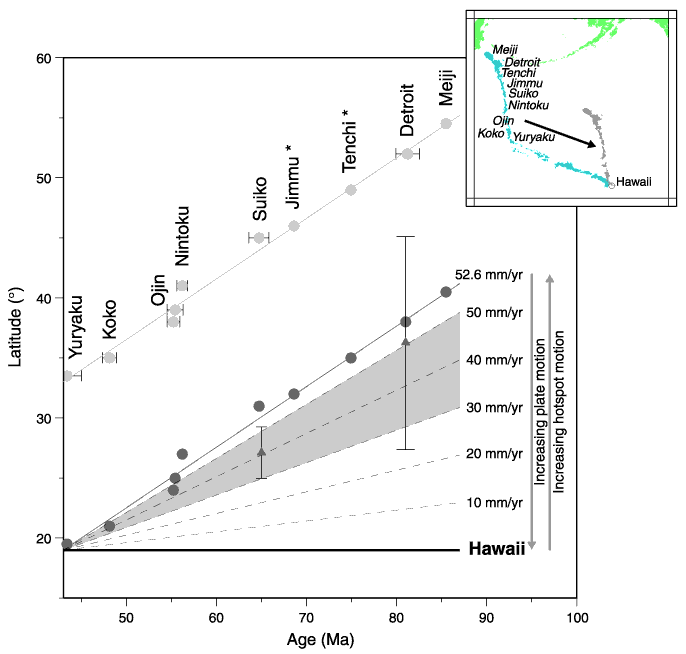
Figure F4.
Plot of latitudinal distance from the 43-Ma bend in the Hawaiian-Emperor hotspot
track vs. age (light circles). Age data are not available for Meiji, Tenchi, and
Jimmu Seamounts; their positions, based on a constant latitudinal progression,
are shown for reference. Dark circles indicate positions after the difference
between the present-day latitude of the 43-Ma bend and Hawaii is subtracted from
each of the present-day latitudes of the Emperor Seamounts. In effect, we slide
the Emperor trend down the Hawaiian chain so that the bend coincides with the
position of Hawaii (inset). This reconstruction allows the following test. If
the Emperor Seamounts record mainly motion of the Hawaiian hotspot,
paleolatitudes should fall close to this corrected latitudinal trend; if the
hotspot has been stationary, the paleolatitudes should fall close to the
present-day latitude of Hawaii. Triangles = paleolatitudes of Suiko and Detroit
Seamounts, with 95% confidence intervals. The null hypothesis that the
paleolatitude result from the Suiko Seamount is drawn from the same population
as the Detroit Seamount data can be rejected at the 95% confidence level using
nonparametric tests (Kolmogorov-Smirnov). In the absence of a rotation of the
entire Earth with respect to the spin axis, known as true polar wander (Tarduno
and Cottrell, 1997; Cottrell and Tarduno, 2000b; Tarduno and Smirnov, 2001), the
hotspot may have moved continuously southward at a rate of 30-50 mm/yr while the
plate also drifted slowly northward (shaded area). This figure is after Tarduno
and Cottrell (1997).



![]()